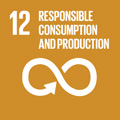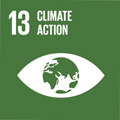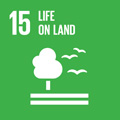- Docente: Gloria Falsone
- Credits: 6
- SSD: AGR/14
- Language: Italian
- Teaching Mode: In-person learning (entirely or partially)
- Campus: Bologna
- Corso: Second cycle degree programme (LM) in Planning and management of agro-territorial, forest and landscape (cod. 8532)
Learning outcomes
At the end of the course the student must have acquired the methodological procedures to define the pedological delineations, characterize the different types of soils, describe the pedological profiles and classify them. In particular, the student must be able to: classify the soils according to pedogenetic, chemical and physical characteristics and international taxonomies; Use classification and soil characteristics as addressing tools for its sustainable use; build soil map through field surveys.
Course contents
Prerequisites
The student who accesses this teaching must have a good preparation on the fundamentals of soil chemistry and biochemistry, as well as on basic knowledge of pedology and soil science. She/he must also know the main factors that regulate the ecosystem, with particular reference to the climatic, biotic components, lithology, and the main pedogenic processes of addition, loss, transformation and translocation. The student must have a good knowledge of English as part of the didactic materials used during theoretical and practical activities is provided in the original language.
Theoretical content of the teaching unit (total teaching unit: 36 hours):
1. Description of the pedological profile: selection of soil profile for the study; profile preparation; the pedological survey forms; station information; description of organic and mineral horizons
2. Physico-chemical characteristics of the soil and their functional interpretation: field assessments; soil sampling and preparation of soil samples; analytical characterization; data reading and interpretation (case studies)
3. Soil classification and its functional interpretation: the international classification soil systems (Key Soil Taxonomy, USDA - Word Reference Base of Soil Resources, FAO), taxonomic keys and their use, practical interpretation of taxonomy of soils
4. Landscape units and soil mapping: the meaning of landscape unity; from the landscape unit to the pedological delineation; organization of a soil map; reading of soil maps and their reports.
5. Derived soil map: the significance of soil use capacity and application in territorial planning processes; susceptibility and vocationality of agricultural and forest soils.
Practical content of the teaching unit (total teaching unit 24 hours):
1. Tools for field survey: surveys of vegetation and forest habitats - spatial and punctual pedological surveys - georeferencing by GPS.
2. Operations on site: pedon identification – profile description – soil sampling
3. Laboratory activity: rapid field assessments– samples preparation - chemical-physical analysis: particle size distribution, pH, conductivity, total carbonates, total organic carbon and nitrogen.
4. Soil map and derived thematic cartography: thematic information levels; Landscape units; pedological delineations; building of soil and land capability maps
Readings/Bibliography
Fundamental will be the use of material provided by the teacher (available on Insegnamenti OnLine) and lecture notes.
-IUSS Working Group WRB. 2022. World Reference Base for Soil Resources. International soil classification system for naming soils and creating legends for soil maps. 4th edition. International Union of Soil Sciences (IUSS), Vienna, Austria. https://www3.ls.tum.de/fileadmin/w00bds/boku/downloads/wrb/WRB_fourth_edition_2022-12-18.pdf
-Ministero delle politiche agricole, alimentari e forestali. 2006. Metodi di valutazione dei suoli e delle terre. Costantini E.A.C. (Ed.). Edizioni Cantagalli . Parte I – capitolo 1, Parte II – capitolo 2.
-Schoeneberger, P.J., D.A. Wysocki, E.C. Benham, and Soil Survey Staff. 2012. Field book for describing and sampling soils, Version 3.0. Natural Resources Conservation Service, National Soil Survey Center, Lincoln, NE.
-Soil Survey Staff. 2022. Keys to Soil Taxonomy, 13th ed. USDA-Natural Resources Conservation Service.
Teaching methods
The course consists of lectures and practical exercises in the laboratory and in the field, and they are carried out in parallel with each other, interacting with the other teaching of the same period in order to integrate or deepen any common topics. The laboratory activities are integrated between them for reading topographical and regional technical map, the organization of dataset of pedological, chemical and physical characteristics of the soils, the building of the soil map and its legend. The soil survey laboratory provides tools for reading the soil profiles using international standard procedures.
For practical activities, students must have participate in Moduli 1 and 2 (https://www.unibo.it/it/servizi-e-opportunita/salute-e-assistenza/salute-e-sicurezza/sicurezza-e-salute-nei-luoghi-di-studio-e-tirocinio ) in advance and in Modulo 3 on specific training on safety and health in study places.
Assessment methods
For the students which attempted to the course (theoretical and practical teaching units) in the current academic year, the final examination will assess the level of knowledge and skills acquired by a written test composed of about 10 questions concerning the contents of lectures (immediately after the conclusion of the lessons) and an oral discussion of the technical report on a pedological field survey. The written test and the oral discussion of the technical report will contribute to the final grade. The attendance to each practical unit will also contribute to the final grade for 0.2/30.
The final oral examination will assess the level of knowledge and skills acquired by the student concerning the contents of lectures. Students who have earned at least 18/30 will be positively evaluated. The duration of the oral test will be an average of 30 minutes.Teaching tools
Computer, webcam, projector, Power-point presentations, e-learning platforms (e.g., Kahoot), field and lab tools
Office hours
See the website of Gloria Falsone
SDGs




This teaching activity contributes to the achievement of the Sustainable Development Goals of the UN 2030 Agenda.
